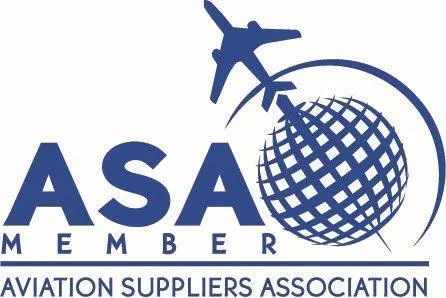
Navigating Aviation Compliance: Key Considerations
In the aviation industry, compliance is more than a regulatory requirement; it is the cornerstone of safety, operational efficiency, and trust. Rapid technological advancements and evolving global standards make maintaining compliance increasingly complex. Stakeholders, from airlines to maintenance organizations, must stay vigilant to ensure they meet the stringent requirements set forth by authorities such as the FAA, EASA, and ICAO. Non-compliance can result in financial penalties, reputational damage, and critical safety risks.
Understanding the multifaceted nature of aviation compliance is essential for all industry participants. Organizations need to adopt proactive strategies to maintain operational safety and regulatory adherence. Effective compliance management enhances efficiency, reduces risks, and builds trust with regulators and customers. Addressing compliance challenges early ensures smoother operations and audit readiness.
Regulatory Frameworks and Global Standards
Aviation compliance is governed by a complex web of international, national, and regional regulations. The International Civil Aviation Organization (ICAO) sets global standards, while individual countries implement these through their respective civil aviation authorities. The Federal Aviation Administration (FAA) in the United States and the European Union Aviation Safety Agency (EASA) in Europe maintain distinct rules and guidelines.
Operating internationally requires navigating varying requirements, which can be resource-intensive and complex. Organizations must continuously monitor regulatory changes to remain compliant. Failure to adapt to new regulations can result in operational disruptions and potential penalties. Establishing compliance programs that account for multiple jurisdictions helps mitigate these risks.

Implementing structured compliance frameworks supports both operational integrity and regulatory alignment. Companies investing in regulatory expertise can reduce the likelihood of non-compliance events. Consistent application of standards across operations strengthens overall safety culture.
Developing internal policies that reflect global and local regulations ensures consistent compliance. Staff must be trained to understand and follow these policies effectively. Organizations that integrate regulatory considerations into daily operations experience fewer audit findings. Alignment of operational practices with legal requirements strengthens credibility with regulators.
Data Management and Traceability in Aviation Compliance
Effective compliance hinges on robust data management systems that ensure accurate and accessible records. Maintenance logs, inspection reports, certification documents, and component histories must be meticulously maintained. Paper-based systems are increasingly inadequate due to the volume and complexity of aviation data. Digital solutions enhance accuracy, efficiency, and accessibility, facilitating real-time updates and audits.
Automated back-to-birth (BtB) trace generation tracks an aircraft component's entire lifecycle, from manufacturing to current status. Every maintenance and modification activity is documented and verifiable, ensuring transparency. This traceability is critical during audits, lease transitions, and inspections. Digitization reduces the risk of human error and loss of important records.
Comprehensive record-keeping allows organizations to respond quickly to regulatory inquiries. Companies adopting digital traceability gain operational insights that improve maintenance efficiency. Enhanced record management supports safer and more reliable aviation operations.
Integrating digital platforms with compliance programs simplifies document retrieval and verification. Automation enables standardized reporting and minimizes manual workload. Streamlined workflows free resources for operational improvements. Accurate, accessible data strengthens the foundation of regulatory adherence.
Audit Preparedness and Continuous Monitoring
Regular audits are a fundamental component of aviation compliance, assessing adherence to regulatory standards and identifying areas for improvement. Internal or external audits, including those conducted by the FAA or EASA, require thorough preparation. Organizations must ensure all documentation is current, accurate, and easily accessible. Internal processes to address audit findings promptly improve compliance outcomes.
Continuous monitoring allows early detection of compliance issues and prevents escalation. Automated systems that track regulatory changes, maintenance schedules, and operational procedures facilitate ongoing adherence. Encouraging a culture of compliance promotes proactive resolution of potential issues. Sustained monitoring enhances operational safety and reduces audit risks.
Monitoring metrics supports risk-based decision-making across the organization. Departments can coordinate efficiently to resolve compliance gaps. Continuous feedback loops strengthen regulatory readiness and operational performance.
Embedding compliance checks into daily operational routines ensures consistent oversight. Staff participation in compliance monitoring fosters accountability. Audit preparedness improves organizational resilience during inspections. Documented procedures demonstrate commitment to regulatory adherence.
Training, Certification, and Personnel Competency
Human factors significantly influence aviation compliance. Adequate training and certification of personnel ensure proper execution of regulatory standards. Training programs must cover technical skills, regulatory knowledge, and safety protocols. Refresher courses and assessments maintain a high level of staff competency.
Certification processes should comply with relevant authority requirements, confirming that personnel possess necessary qualifications. Clear role definitions and accountability improve compliance implementation. Interdepartmental collaboration strengthens adherence to standards. Open communication supports problem-solving and knowledge sharing.

Continuous professional development reinforces safety culture. Skilled personnel reduce operational errors and regulatory violations. Investments in training yield measurable improvements in compliance performance.
Personnel competency audits help identify training needs before compliance gaps occur. Monitoring performance ensures alignment with regulatory expectations. Effective supervision supports safe and reliable aviation operations. Competent staff contribute directly to organizational compliance success.
Technological Advancements and Compliance Tools
Technology integration transforms aviation compliance practices, improving accuracy and efficiency. Advanced software solutions offer automated documentation, real-time monitoring, and predictive analytics. Automation reduces administrative burdens and enhances record reliability. Digital tools facilitate seamless data sharing between departments and stakeholders.
Cloud-based platforms provide scalability and flexibility, adapting to changing regulations and operational demands. Centralized data access promotes transparency and collaboration. Enhanced security protocols protect sensitive compliance information. Technology supports faster audits and reporting processes.
Investing in digital solutions helps organizations respond quickly to regulatory changes. Advanced systems enable predictive maintenance and reduce risk of non-compliance. Leveraging technology improves overall operational safety and efficiency.
Implementing integrated compliance tools streamlines workflows across all organizational levels. Automation reduces manual errors and ensures consistent adherence to standards. Technology empowers staff to manage compliance proactively. Organizations using advanced systems demonstrate a commitment to regulatory excellence.
Strengthen Your Aviation Compliance Strategies
Effective aviation compliance requires an integrated approach encompassing regulatory adherence, accurate data management, audit readiness, personnel competency, and advanced technology implementation. Organizations that proactively address these key areas can mitigate risks, improve operational efficiency, and maintain safety standards.
Continuous investment in compliance programs supports smoother audits, lease transitions, and operational continuity. Leveraging robust systems enhances transparency and ensures readiness for regulatory inspections.
Advanced digital solutions play a pivotal role in strengthening compliance strategies. Automated traceability and lifecycle documentation platforms simplify back-to-birth records, reduce errors, and streamline adherence to aviation compliance requirements.
Organizations adopting such solutions enhance both operational safety and regulatory reliability. Explore how ProvenAir’s advanced digital traceability and documentation solutions can elevate your aviation compliance efforts.


